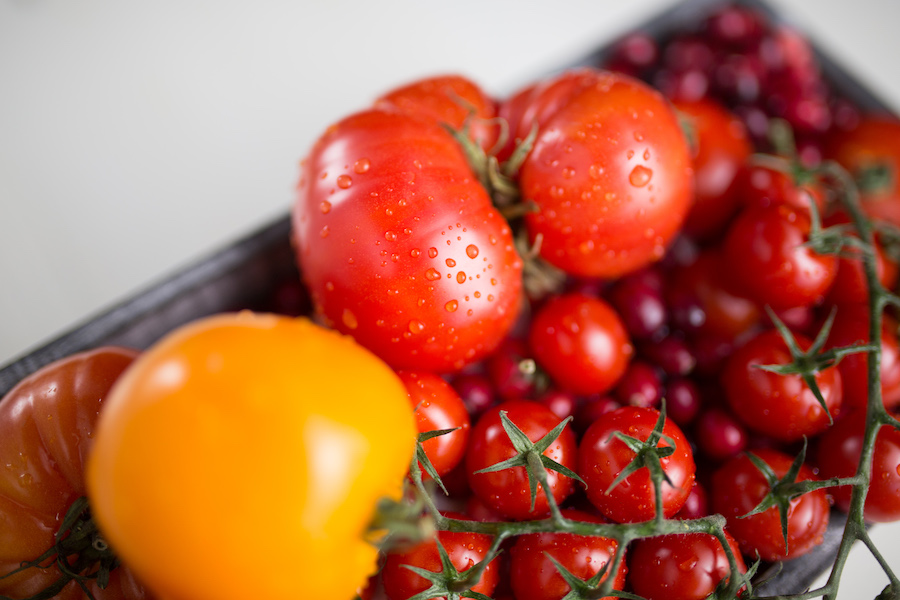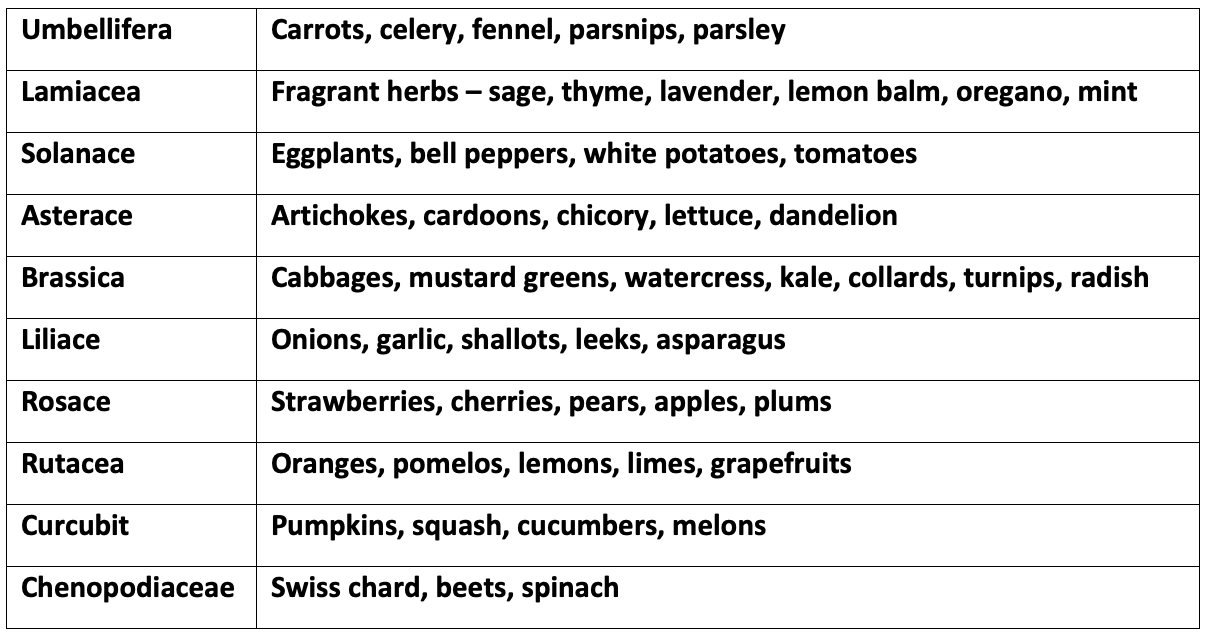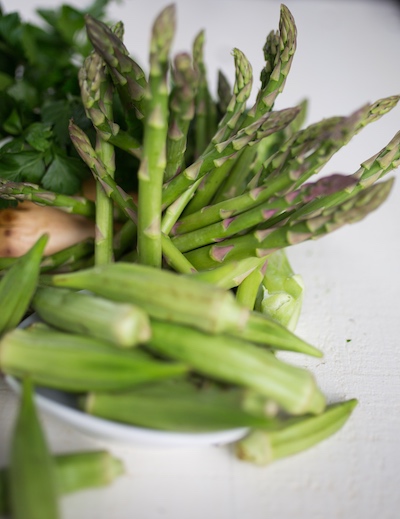
Demystifying Dietary Guidelines on Fruits and Vegetables
Director of Nutrition Celine Beitchman is simplifying meal ideas and serving recommendations for the five major food groups. Here's her guidance on fruits and vegetables.
In their whole-food forms, fruits and vegetables are important sources of energy and provide a variety of fibers that help control blood sugar, keep our digestive system fit and feed our microbiome. Just as vital, these foods provide nutrients that the body can’t survive without: vitamins, minerals and phytochemicals. Despite documented benefits, few Americans eat anywhere close to the minimum recommended amounts – five to seven servings a day.
Most data suggests that adults in the U.S. eat somewhere between one and three servings — the equivalent of a piece of fruit or cup of juice and a half cup of cooked vegetables or a salad. Does that difference show up in health outcomes? While studies that look at food-health relationships can’t prove cause and effect, associations in this area pile up in a convincing way. Would our health be different if we incorporated more of these foods into our diets? Based on observational and clinical research, it certainly seems so. In addition to contributing to satiety — a feeling of fullness that can reduce your tendency to snack between meals — high-fiber fruits and vegetables reduce your risk of hypertension, Type 2 diabetes and colon cancer (Bertoia et al, 2015).

A 2021 meta-analysis published in an American Heart Association journal, Circulation, by Wang et al (2021) reinforced the benefits of including produce in your diet. The authors looked at diets and health outcomes like cardiovascular and respiratory disease and cancer in more than 100,000 men and women. Meeting minimum recommendations, “at or equal to 5 servings per day of fruit and vegetables was associated with the lowest mortality,” (Wang, 2021). The data suggests five servings, not including starchy ones like peas or potatoes, lowers your risks of most major chronic diseases. And more was not necessarily better: at higher intakes, the benefits seemed to plateau.
I learned over the years that the more produce you have around, the more likely you’ll eat it, but finding what you like to eat day after day is another story. That takes some experimentation and, at first, some planning.
There are more than nine distinct categories of fruits and vegetables with unique and overlapping benefits. Consuming a wide variety across many days is an excellent way to ensure you’re meeting your nutrient needs in a satisfying way. Let’s take a look at our options.
Eating from distinct categories? You may have heard of brassicas, but how about food from the family umbelliferae? Below is a brief breakdown and some examples:
 If you recognized foods in the chart above, you probably noticed there’s a lot of variation among them. If you made a meal that included one from each botanical group, your plate would be a rainbow of colors, textures and tastes.
If you recognized foods in the chart above, you probably noticed there’s a lot of variation among them. If you made a meal that included one from each botanical group, your plate would be a rainbow of colors, textures and tastes.
Eating a “serving’s worth”
Eating from one category or more doesn’t necessarily mean you’re getting a serving’s worth. To reap the benefits, you likely need more than just a taste.
Servings can be confusing to keep track of. A piece of fruit is a serving if it’s a tennis ball size, like a medium apple or banana, but berries are measured in cups. A ½ cup of berries is a serving. When it comes to vegetables, serving sizes change depending on whether the food is raw or cooked, solid or leafy. A serving of dark leafy greens is ½ cup cooked or 1 cup raw, lettuces are measured as 2 cups raw. For solid foods, like root vegetables (e.g. carrots, beets), a serving is ½ cup.
Putting it all together, and doing it day after day
Most of us eat a little differently every day. While research suggests five servings is good enough, aiming for six is a more realistic approach. Aiming for two servings per meal is a good place to start.
What does getting about six servings from a diverse array of fruits and vegetables over a whole lifetime look like? The palate craves flavor and texture and gets bored easily. If you’re in a rut, try a new cooking technique. Keeping it seasonal helps.
A seasonal plant-forward sample day might look like this:
(The sample is general and focuses on produce. Swap out or increase portions of proteins, nuts, seeds or fats to your taste and needs.)
BREAKFAST:
- 2-3 hard-boiled eggs or scrambles (vegan or not), 1 medium cucumber sliced, ½ cup cherry tomatoes, 1 piece whole grain toast, 4 ounces fresh orange juice or
- 1 cup oatmeal with ½ blackberries, 1 medium grapefruit or ½ cup melon
 LUNCH:
LUNCH:
- 2-3 cups leafy greens salad with ½ cup raspberries, sliced fennel, grilled tofu, and orange vinaigrette or
- 12 ounces gazpacho soup, lentil-feta salad with celery and carrots, whole grain crackers
DINNER:
- Eggplant rollatini, ½ cup garlicky sauteed broccoli rabe, and tomato-parsley salad or
- Falafel, taboulleh, 1 cup watercress, and a few spears grilled asparagus
Study with Chef Celine in culinary nutrition, food therapy or Health-Supportive Culinary Arts.
References:
Wang DD, Li Y, Bhupathiraju SN, Rosner BA, Sun Q, Giovannucci EL, Rimm EB, Manson JE, Willett WC, Stampfer MJ, Hu FB. Fruit and Vegetable Intake and Mortality: Results From 2 Prospective Cohort Studies of US Men and Women and a Meta-Analysis of 26 Cohort Studies. Circulation. 2021 Apr 27;143(17):1642-1654. doi: 10.1161/CIRCULATIONAHA.120.048996. Epub 2021 Mar 1. PMID: 33641343; PMCID: PMC8084888.
Bertoia ML, Mukamal KJ, Cahill LE, Hou T,Ludwig DS, Mozaffarian D, et al. (2015) Changes in Intake of Fruits and Vegetables and Weight Change in United States Men and Women Followed for Up to 24 Years: Analysis from Three Prospective Cohort Studies. PLoS Med 12(9)


Add new comment